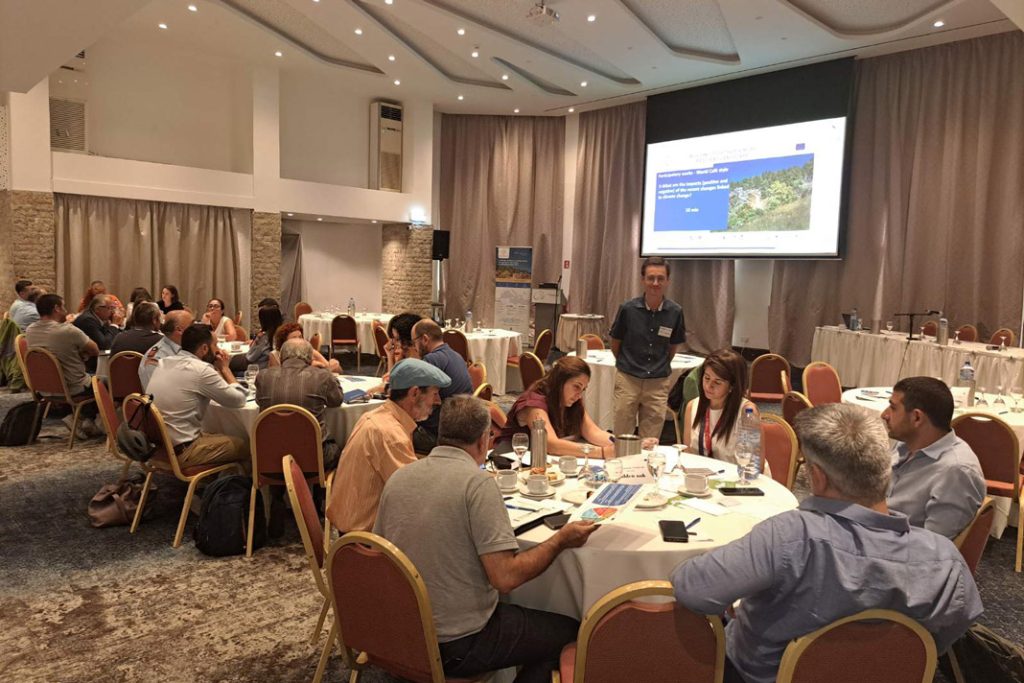
The participatory approach of EUC-CERIDES (Centre of Excellence in Risk and Decision Sciences of the European University of Cyprus) for the Cyprus LandLab has been an opportunity to lay the foundations for an integrated landscape resilience strategy in Cyprus, under the kind auspices of the Honourable Commissioner for Environment of the Republic of Cyprus; Dr. Maria Panagiotou.
The Centre of Excellence in Risk and Decision Sciences of the European University Cyprus, is the Cypriot Partner of the pan-European Consortium project “ResAlliance – Landscape Resilience Knowledge-Alliance for Agriculture and Forestry in the Mediterranean Basin, funded by the European Commission and coordinated by EFI – European Forest Institute, with a strong Euro-Mediterranean emphasis.
ResAlliance’s “LandNet” is a Mediterranean alliance on landscape resilience for forestry and agriculture. By engaging and training farmers, foresters, and other key stakeholders, the LandNet will continuously identify new cooperation and networks to improve and increase knowledge and good practises while also delivering an extensive range of easy-to-access material. Through the LandNet, ResAlliance will engage and train farmers, foresters, and other key stakeholders for the knowledge transfer of managerial, technological, financial, or governance solutions.
In five selected Mediterranean regions (Portugal, Spain, Italy, Greece, and Cyprus), ResAlliance implements “LandLabs” as a tool to support knowledge transfer and activate regional landscape resilience solutions. LandLabs are context-specific knowledge transfer and engagement programmes for farmers and foresters in the selected regions that represent important areas for climate change impacts.
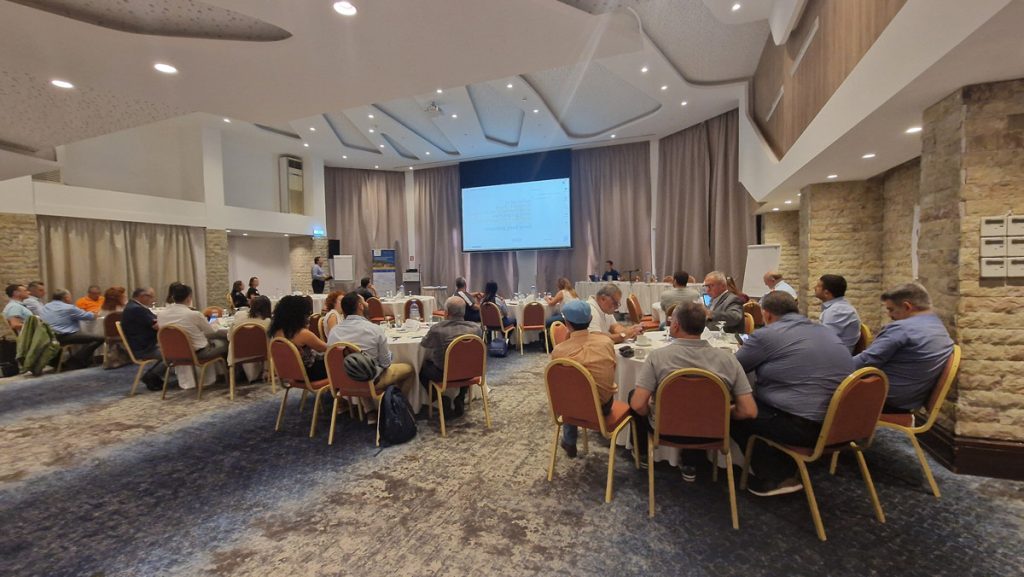
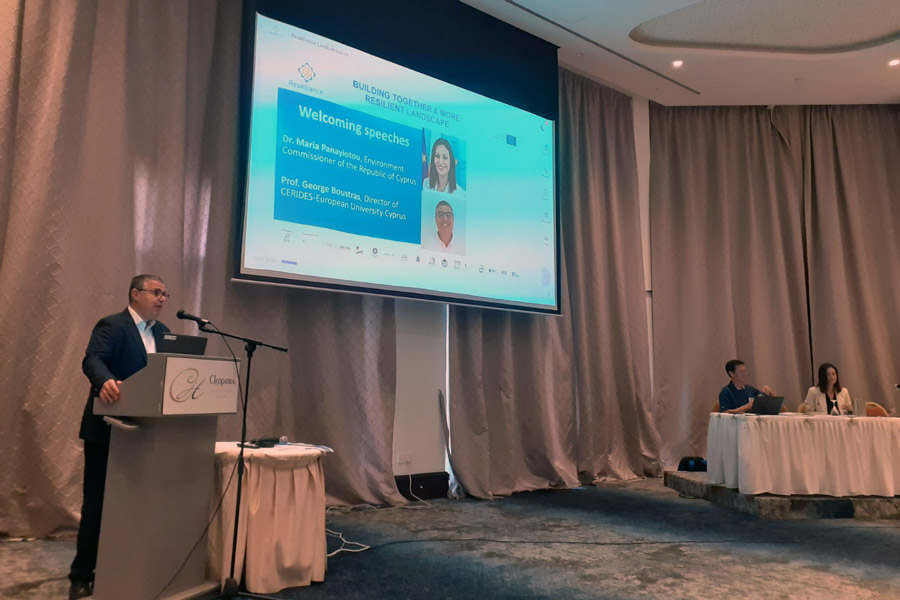
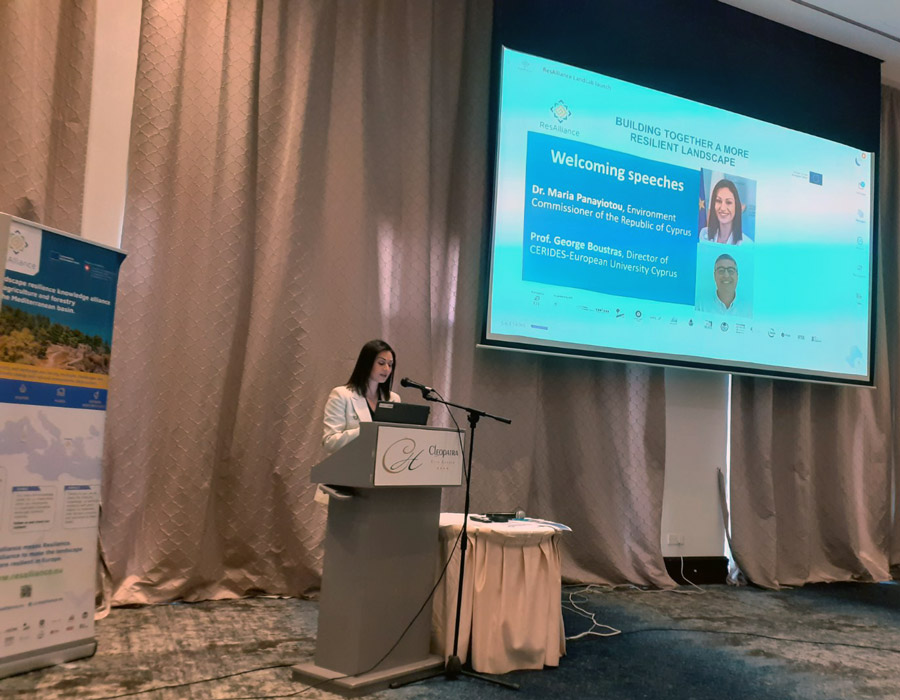
Co-creating and co-developing the Cypriot integrated landscape resilience strategy
EUC-CERIDES is leading the Cyprus LandLab and organised the local-national launch event in early October. This event, as well as all of EUC-CERIDES’ activities in ResAlliance, have been placed under the kind auspices of the Honourable Commissioner for the Environment of the Republic of Cyprus; Dr. Maria Panagiotou.
The EUC-CERIDES team, consisting of Prof. George Boustras, Director of CERIDES, Mr. Pierantonios Papazoglou, Director of Research and Strategy, and Mr. Matthieu Jost, Research Project Manager, organised a highly participatory “World Café” style workshop, relying on both traditional methods and materials and an innovative live platform.
The launch event of the Cyprus LandLab was a great success, with all participant stakeholders noting the usefulness of the participatory and interactive methods as well as pledging their interest in future steps in defining good and sustainable practises within the ResAlliance scope!
More integrated actions with collective and cross-sectorial actions have been pledged by participants coming from governmental agencies, private companies, research institutes, and civil organisations, highlighting that such action needs political support. Land analysis and planning should pay special attention to preserving forests, natural areas, and fertile land for agriculture, facilitating tree planting and maintenance.
In addition to the promotion of a multifunctional landscape approach, participants also highlighted the need to improve civil protection organisations to better cope with wildfires, floods, droughts, and extreme weather events (hail, heat waves). It’s another very transversal subject deeply linked to governance but also to management practises, technology, and innovation issues. It needs early warning systems, the use of technological tools, forecasting, assessment of damages, and the collaboration of the various agencies and services.
The following synoptic graphic has been shared with the workshop’s participants to open their minds on resilience. This CEREMA Resilience Compass is intended to help stakeholders in a territory strengthen their resilience to better anticipate, act, bounce back, transform over time, and reduce their vulnerabilities.
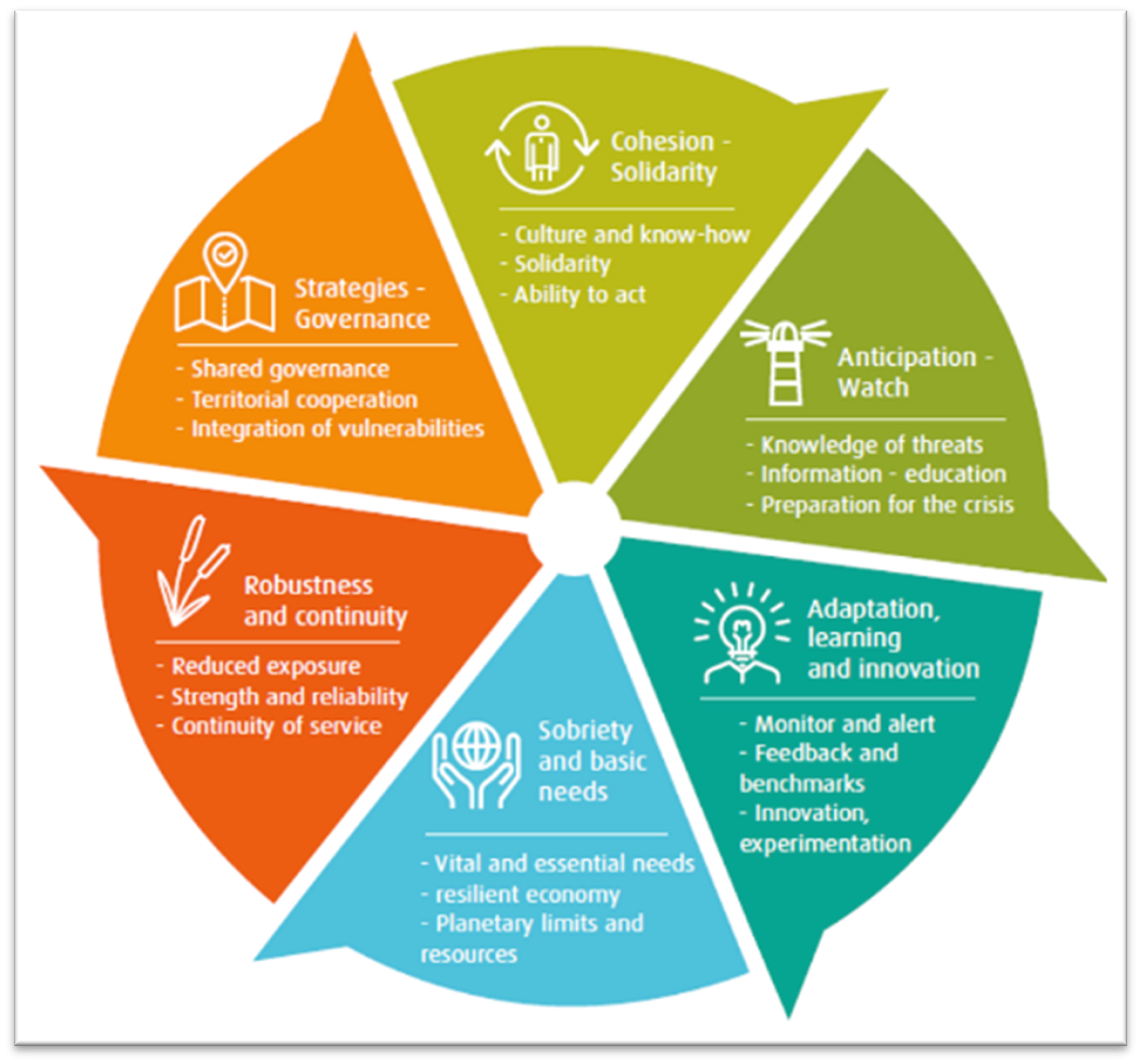
Understanding the importance of conservation and restoration
Participants emphasised the link between landscape resilience and adaptation capacity, sustainability, and soil health, defined as the “continued capacity of soil to function as a vital living ecosystem that sustains plants, animals, and humans” (regulating water, sustaining plant and animal life, filtering and buffering potential pollutants, cycling nutrients, and providing physical stability and support)1.
The abandonment of rural areas and agricultural lands has been highlighted as one of the main changes leading to an accumulation of shrubs and herbaceous, flammable biomass, which increases the risk of wildfire. And more than the conservation of the forest itself, there is also the conservation and restoration of the ancestral agricultural practises that have been highlighted. For example, the history of carob in Cyprus has been pointed out taking into account that the carob tree is particularly drought-resistant, the demand for rise and carob development part of the Cyprus CAP strategy. Dry stone walling is another example of ancestral practice which is today supported through incentives for dry-stone wall restoration for soil and water retention.
However, the main ancestral practice that participants want to encourage is control grazing in strategic areas. Participants highlighted that this action will need the development of a legal framework, dedicated lands, a communication strategy and a strong capacity-building programme. Effectively, in the past century, the shepherds have been, widely but most probably wrongly, accused of destroying the forest by overgrazing and the benefits of the agroforestry practices ignored. A lot of energy has been spent to separate forest, agriculture and husbandry and the path to restoration is a full journey to get a holistic understanding of the interaction of human activities with natural systems.
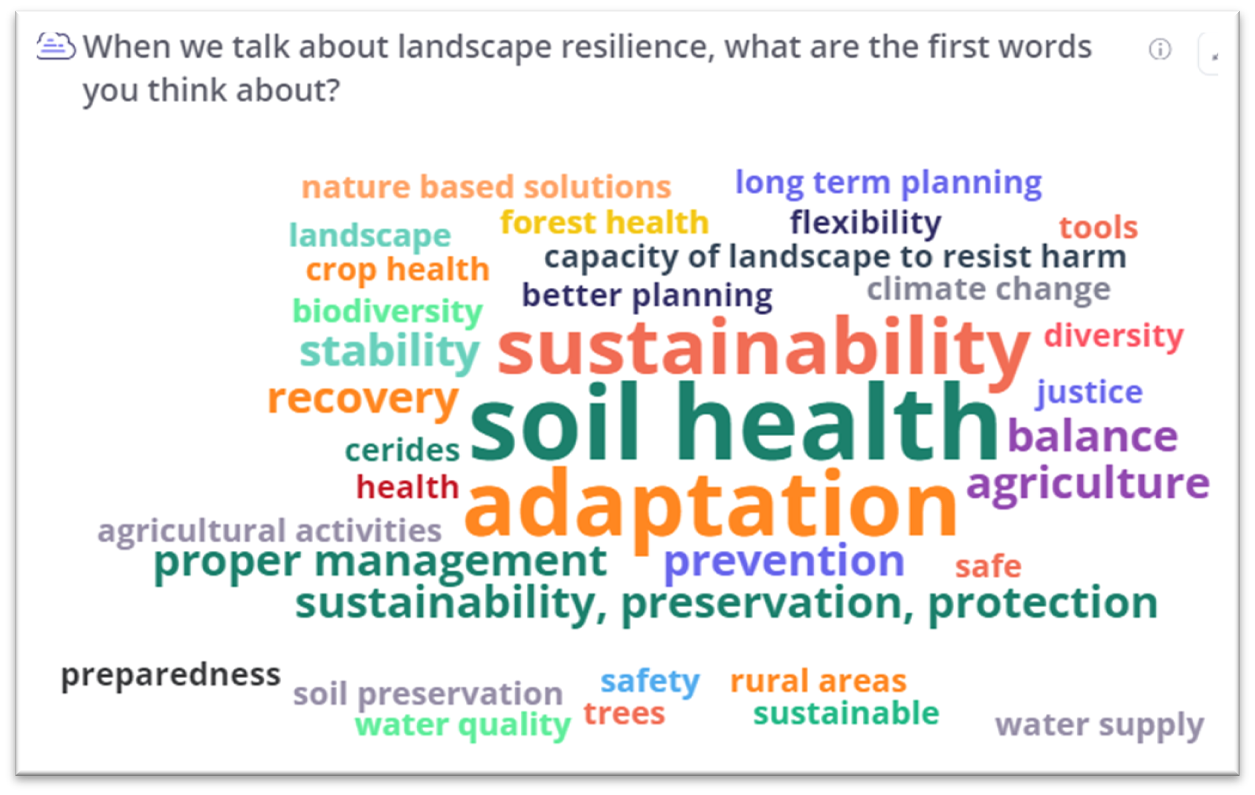
Innovative green fire break and water-saving measures
Land abandonment may generate an extension of the forest area, storing more carbon, improving soil retention, and water filtration, slowing down the water cycle, regulating extreme temperatures, improving air quality and soil health, increasing wildlife and biodiversity, reducing the impact of floods and droughts, providing foods for animals and human, etc… Trees for sure could have many benefits but they could also increase wildfire if the forest is unmanaged like it’s mostly the case in the private forest surrounding the Troodos National Forest on ancient agricultural lands.
To reduce wildfire impact, in addition to strategic grazing, participants from the citrus table (each table had a plant name), proposed the innovative and nature-based solution of green fire break zones supporting biodiversity and wildfire prevention. The idea is to identify and test a selection of “fire-resistant” species according to their needs and capacities (e.g.: prickly pear) to be planted in fire break zones.
In Cyprus, due to low absorption capacity and the absence of economies of scale in the agricultural sector, the local market for innovative Cypriot companies offering solutions for agriculture, such as precision farming, automation, and robotics, is very small. Nevertheless, Cyprus constitutes a rare example of a country where many measures are in place, specifically in agriculture, to increase the overall water use efficiency. Cyprus increased dam capacity, recycled wastewater use, and irrigation efficiency, put in place smart irrigation systems, and promoted crop rotation and species adaptation. All these practices should increase farmers’ resilience but may be not considered as landscape-resilient practices.
On the other hand, like grazing in the forest, various forms of agroforestry have been practiced in Cyprus since time immemorial but there has been a gradual reduction in the practice of agroforestry in favor of more intensive monocultural practices. It would probably be a field where Cyprus could learn from other Mediterranean countries involved in ResAlliance.
The recent halloumi certification has been also seen as a driver of change with new investments in the sheep and goat sector but we must be vigilant that it goes for sustainable changes supporting landscape resilience.
References
1US Natural Resources Conservation Service, Soil Health, 2018
Visit ResAlliance’s official website
This article was originally written by:
EUC-CERIDES team
The post Cyprus ResAlliance’s LandLab launch: initiating a participatory integrated landscape-resilience strategy for the island appeared first on Resilience Blog.